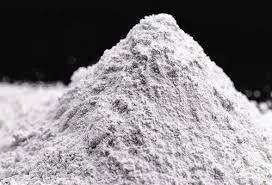
Dec . 16, 2024 17:03 Back to list
HPMC Gelation Temperature Effects on Polymer Properties and Applications
HPMC Gelation Temperature Understanding Its Significance and Applications
Hydroxypropyl methylcellulose (HPMC) is a versatile cellulose ether commonly used in various industries, including pharmaceuticals, food, and construction. One of the critical properties of HPMC is its gelation temperature, which plays a significant role in its application and efficacy. Understanding HPMC gelation temperature is crucial for optimizing the formulation processes where HPMC is used as a thickening, stabilizing, or film-forming agent.
What is HPMC?
HPMC is a non-ionic, water-soluble polymer derived from cellulose. It is widely utilized in hydrophilic applications due to its ability to form gels in response to temperature changes. When HPMC is dissolved in water, it swells and forms a viscous solution, which can transition to a gel state upon heating. This transition is characterized by the gelation temperature, which is a crucial parameter affecting the performance of HPMC in different formulations.
The Gelation Process
The gelation process of HPMC is influenced by various factors, including concentration, molecular weight, and the presence of additives. Generally, as the temperature increases, the hydrogen bonds between the HPMC chains are disrupted, leading to the loss of viscosity. However, upon reaching a specific temperature, known as the gelation temperature, HPMC chains begin to associate more strongly, forming a three-dimensional network that traps water, resulting in gel formation.
Importance of Gelation Temperature
1. Pharmaceutical Applications In drug delivery systems, the gelation temperature of HPMC is particularly important. For instance, in the development of controlled-release formulations, the gelation temperature can determine the rate at which a drug is released into the body. A higher gelation temperature may be preferable in certain applications to ensure that the drug remains encapsulated until it reaches a specific body temperature, such as in localized treatments or implantable devices.
2. Food Industry HPMC is used as a food thickener and stabilizer. Understanding the gelation temperature is vital for food manufacturers to achieve the desired texture and stability in products such as sauces, dressings, and dairy items. The gelling properties can affect mouthfeel, flavor release, and overall consumer acceptance.
hpmc gelation temperature

3. Construction In construction materials, HPMC is utilized to enhance workability and adhesion in mortars and plasters. The gelation temperature influences how these materials behave under different environmental conditions, affecting their performance and durability.
Factors Affecting Gelation Temperature
Several factors can influence the gelation temperature of HPMC
- Concentration Generally, increasing the concentration of HPMC can raise the gelation temperature. Higher concentrations result in a more significant number of intermolecular interactions, thereby promoting gel network formation.
- Molecular Weight HPMC comes in various molecular weights, which can impact gelation temperature. Higher molecular weight HPMC typically exhibits a higher gelation temperature due to increased chain entanglement and intermolecular forces.
- Additives and Solvents The addition of salts, surfactants, or co-solvents can significantly influence the gelation temperature. For instance, the presence of ionic species can screen hydrogen bonding, affecting the interaction between HPMC chains and their ability to form a gel.
Conclusion
The gelation temperature of HPMC is a fundamental property that dictates its performance in various applications. From pharmaceuticals to food products and construction materials, the understanding and manipulation of HPMC's gelation behavior can lead to enhanced product formulations that meet specific requirements. As research continues into the properties and applications of HPMC, its gelation temperature will remain a critical focus, driving innovation and efficiency across multiple industries. Awareness of how different factors affect this property will allow formulators to tailor their products for optimized performance, ensuring that HPMC continues to be a valuable material in diverse fields.
-
Versatile Hpmc Uses in Different Industries
NewsJun.19,2025
-
Redispersible Powder's Role in Enhancing Durability of Construction Products
NewsJun.19,2025
-
Hydroxyethyl Cellulose Applications Driving Green Industrial Processes
NewsJun.19,2025
-
Exploring Different Redispersible Polymer Powder
NewsJun.19,2025
-
Choosing the Right Mortar Bonding Agent
NewsJun.19,2025
-
Applications and Significance of China Hpmc in Modern Industries
NewsJun.19,2025







